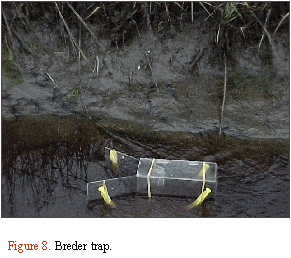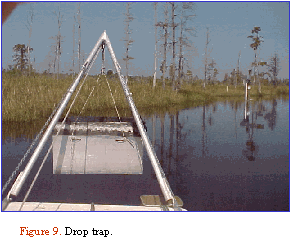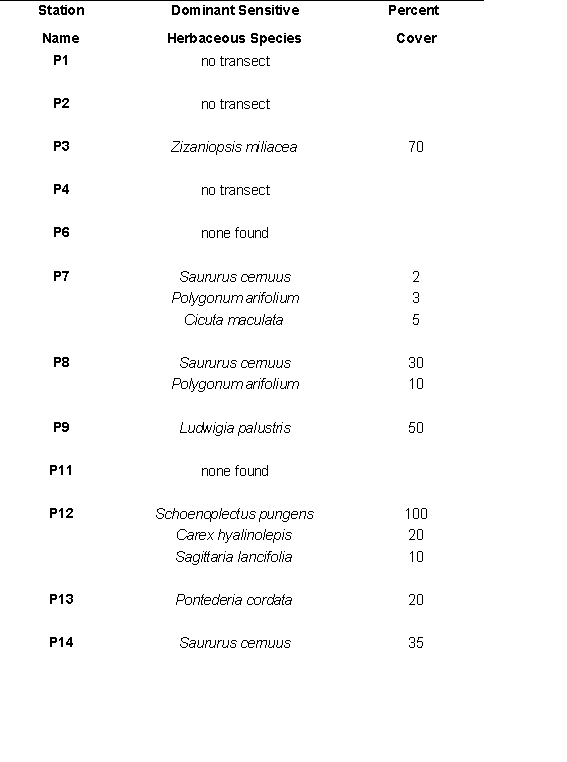

Benthic and Epibenthic Fauna
Objective
The species composition, dominance, abundance, and diversity of benthic and epibenthic organisms are monitored as an indicator of potential biotic consequences of changes in tidal amplitude, tidal excursion, or salinity resulting from the channel deepening project. Changes in wetland inundation regimes and the location of salinity isoclines may have dramatic effects on recruitment success and survival of benthic infauna and habitat availability to wetland associated fish and decapods. Channel alterations may lead to changes in relative composition and distribution of benthic and epibenthic organisms.
Methods
Benthic
Benthic samples are collected from nine stations annually during a two-week sampling period in June using 10 cm diameter x 12 cm depth cores.
Three cores are collected from each of two intertidal areas and two shallow subtidal areas.
Samples are fixed in 10% Rose Bengal dye, sieved through 0.5 mm screen and stored in 70 % IPA.
Retained organisms are identified to lowest reliable taxon.
Epibenthic
Epibenthic samples are collected from nine stations annually during fall and spring using both Breeder traps and drop traps.
Breeder traps (Figure 8) sample small fish and decapods moving across habitat boundaries.
Two sets of five Breeder traps are placed in the upper intertidal, mid-intertidal and low intertidal/shallow subtidal.
Drop traps (Figure 9) sample fish and decapods.
Eighteen replicate drops are collected at least 10 m apart.


Preliminary Results
The benthic infaunal community is currently dominated by polychaetes (~40%, Maranzellaria, Polydora, Streblospio ) and oligochaetes (~50%) in the saline areas and by oligochaetes (~40%, Tubificoides), insect larvae (~25%), and polychaetes (~25% , Hobsonia) in the fresh areas. The epibenthic community consists of wetland associated fish and decapods, such as Palaeomonetes, Lagodon, Fundulus, Leiostomus, Gobionellus in the saline areas and Paralichthys, Uca, Leiostomus, Anguilla in the fresh areas.
VEGETATION
Vegetation assemblages at each station were characterized in August 2000. Dominant vascular plant species were surveyed and noted along each transect in each of three strata: canopy, shrub and herb. In the portion of each transect closest to the stream, a stand of sensitive herbaceous species has been identified and its location has been recorded using GPS. Sensitive vegetation is defined as any perennial herb that is characteristic of fresh or brackish marsh/ swamp habitats. Sensitive vegetation was not found at all stations. See table 1 for a list of dominant herbaceous species found at each station in August 2000. These stands will be re-evaluated each year for changes in dominant sensitive herbaceous species.
Table 1. List of dominant sensitive herbaceous species
